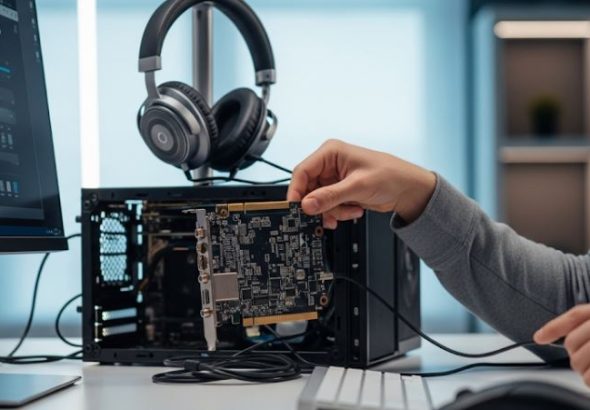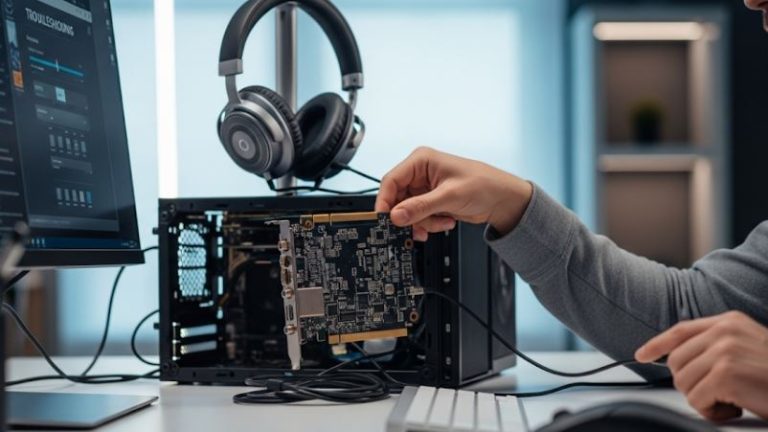
The journey of the mobile phone is a fascinating saga of technological advancement, shrinking components, and ever-evolving design philosophies. While today we often debate screen sizes, camera megapixels, or battery life in hours, there’s a more fundamental physical characteristic that has seen a truly dramatic transformation: weight. From devices that required a dedicated carrying arm to gadgets so light they could be mistaken for a keychain trinket, the spectrum of mobile phone heft is vast.
The Colossus of Communication: The Heaviest Mobile Phone 🏋️
When we think of early mobile phones, images of bulky „bricks” often come to mind. However, even those iconic early handhelds were svelte compared to the true heavyweight champion of the mobile world: the Mobira (Nokia) Senator. Launched in 1982, this device wasn’t just a phone; it was a statement, and a hefty one at that, tipping the scales at an astounding 9.8 kilograms (approximately 21.6 pounds).
To truly appreciate the Mobira Senator’s incredible weight, one must understand the context of its time. The concept of a „mobile” phone was still in its infancy, and the technology required to make cellular communication possible was far from miniaturized. The Senator was designed for the NMT-450 network (Nordic Mobile Telephone), which was one of the pioneering first-generation (1G) analog cellular systems.
Why was the Mobira Senator so incredibly heavy? Several factors contributed to its substantial mass:
- Battery Technology: In the early 1980s, battery technology was a world away from the sleek, lightweight lithium-ion cells we use today. The Mobira Senator relied on large, cumbersome lead-acid battery technology, similar to what one would find in a car, to power its operations. These batteries, while capable of providing the necessary power for the energy-hungry components, were inherently very heavy. The need for reasonable talk time and standby capability meant a significant portion of the Senator’s 9.8 kg was dedicated purely to its power source. The sheer energy requirements of the powerful radio transceivers of the era also dictated a large battery capacity.
- Transceiver and Electronics: The radio transceiver needed to connect to the NMT-450 network was a complex and bulky piece of equipment. Cellular technology was groundbreaking, and the components – including oscillators, amplifiers, filters, and processors – were discrete and sizable. Unlike modern phones that integrate most functions onto a single System on a Chip (SoC), the Senator’s internal electronics would have been a sprawling assembly of individual components, each adding to the overall weight and volume. The powerful transmitter required for the analog network also necessitated robust, and therefore heavier, components.
- Construction and Casing: The Mobira Senator was designed as a „transportable” phone, often installed in cars but capable of being carried – if one possessed the strength and will. Its casing needed to be robust to protect the valuable and sensitive electronics within, especially when moved. This meant durable, thick plastics and metal framing, further contributing to its substantial weight. It wasn’t designed for a pocket or a small bag but rather as a piece of serious communication equipment intended for professionals who needed to stay connected on the go, such as business executives or field engineers.
- Handset and Peripherals: While the main unit contained the bulk of the weight, the attached handset, though more conventional in size, also added to the overall mass. The connecting cables and the robust nature of all its physical interfaces were built for durability rather than featherlight convenience.
Using the Mobira Senator was an experience in itself. It wasn’t a device you casually slipped into your pocket. Its „mobility” was more akin to that of a portable generator than a modern smartphone. It would typically reside in a vehicle, drawing power from the car’s electrical system, but could be detached and carried, usually via a sturdy handle, for use at a construction site, a remote office, or anywhere a fixed line was unavailable but cellular coverage existed. The sheer physical presence of the Senator underscored its role as a high-value communication tool in an era when mobile connectivity was a luxury and a significant business advantage.
The 9.8 kg mass of the Mobira Senator serves as a stark reminder of how far mobile technology has come. It represents an era when the marvel was not the sleekness or lightness of the device, but the very ability to communicate wirelessly over vast distances. While it didn’t achieve widespread consumer adoption in the way later, lighter handhelds did, the Senator was a crucial step in the evolutionary path of mobile communications, demonstrating the demand for such technology even when it came with a significant physical burden. Compared to today’s average smartphone weighing between 150 to 250 grams (0.15 to 0.25 kg), the Senator was roughly 40 to 65 times heavier.
For more context on early mobile communication systems, you can explore the history of the Nordic Mobile Telephone (NMT) system, which the Mobira Senator utilized.
The Whisper of a Device: The Lightest Mobile Phone
At the opposite extreme of the weight spectrum lies a device so diminutive and light that it almost defies the traditional concept of a mobile phone. While several contenders have vied for the title over the years, the Zanco tiny t1, which emerged around 2017, stands out with its astonishingly minimal weight of just 13 grams (0.013 kilograms or approximately 0.0287 pounds).
To put its 13-gram weight into perspective, it’s lighter than a standard AA battery (which weighs around 23-24 grams) and significantly lighter than most car key fobs. The Zanco tiny t1 is often marketed as the „world’s smallest mobile phone,” and its featherlight nature is a direct consequence of its minuscule dimensions and minimalist feature set.
How was the Zanco tiny t1’s remarkable lightness achieved?
- Extreme Miniaturization and Material Choice: The most apparent factor is its size. The Zanco tiny t1 is incredibly small, measuring just 46.7mm in length, 21mm in width, and 12mm in thickness. Its casing is made from lightweight plastic, contributing minimally to the overall mass. Every component inside is chosen for its small form factor and low weight.
- Minimalist Functionality: The tiny t1 is not a smartphone; it’s a basic feature phone designed primarily for making calls and sending text messages. It operates on 2G networks, which require less complex and power-hungry hardware than 3G, 4G, or 5G. The lack of features like a large touchscreen, high-resolution cameras, GPS, Wi-Fi, or a powerful processor significantly reduces the number and size of components needed, thereby drastically cutting down on weight.
- Tiny Display: The phone features a minuscule 0.49-inch OLED screen. OLED technology is generally lighter than LCD, and the extremely small size of this display means its contribution to the overall weight is negligible. While functional for displaying numbers and basic text, it’s a far cry from the expansive screens on modern smartphones.
- Small Battery: Powering such a basic device requires very little energy. The Zanco tiny t1 is equipped with a tiny 200mAh lithium-ion battery. While this capacity sounds incredibly small compared to the 4000-5000mAh batteries in contemporary smartphones, it’s sufficient to provide the tiny t1 with a claimed standby time of up to 3 days and around 180 minutes of talk time. The small physical size and energy density of modern lithium-ion polymer batteries are crucial to achieving such low weight.
- Highly Integrated Chipset: Though not a „smartphone” SoC, the core functions of the Zanco tiny t1 are managed by a highly integrated chipset (often a MediaTek or similar basic phone chipset). This integration means fewer individual components are needed, saving space and, critically, weight. The principles of System on a Chip (SoC) design, even for basic phones, play a role here.
The Zanco tiny t1, with its 13-gram frame, is more of a novelty or a niche product than a mainstream device. It can be used as an emergency backup phone, a discreet communication tool, or simply as a talking point due to its extreme size and lightness. Typing on its tiny keypad is a challenge, and its 2G-only connectivity limits its usability in regions where 2G networks are being phased out. However, its existence demonstrates the extreme possibilities of mobile phone miniaturization and weight reduction.
It represents a design philosophy diametrically opposed to that of the Mobira Senator. Where the Senator’s bulk and weight were byproducts of the available technology to achieve mobile communication, the tiny t1’s minimal mass is a deliberate design choice, pushing the boundaries of how small and light a functional calling device can be. It’s a testament to how far component miniaturization and power efficiency have progressed, allowing for a complete communication device to weigh less than a few coins.
Another device that famously held the title for the lightest mobile phone for a time, as recognized by Guinness World Records, was the Modu Phone, launched in 2008. The core Modu device weighed approximately 40.1 grams (0.0401 kg). It was designed as a tiny core unit that could be inserted into various „jackets” to add functionality and a different form factor. While heavier than the Zanco tiny t1, the Modu Phone was an earlier pioneer in the quest for ultra-light mobile technology.
The Incredible Shrinking Act: The Evolution of Mobile Phone Weight 📱
The chasm between the 9.8 kg Mobira Senator and the 13-gram Zanco tiny t1 is not just a difference in pounds and ounces; it’s a testament to decades of relentless innovation in materials science, battery technology, component miniaturization, and design engineering.
The early days of mobile phones, dominated by devices like the Mobira Senator and the first handheld Motorola DynaTAC 8000X (which itself weighed around 794 grams to 1.1 kg in its various iterations and was considered revolutionary for its „portability”), were characterized by substantial weight. This was an accepted trade-off for the unprecedented freedom of untethered communication.
Several key advancements have driven the dramatic reduction in mobile phone weight over the years:
- Battery Evolution: This is perhaps the single most significant factor. The transition from heavy lead-acid and later Nickel-Cadmium (NiCd) batteries to lighter Nickel-Metal Hydride (NiMH) and eventually to the much lighter and more energy-dense Lithium-ion (Li-ion) and Lithium-polymer (LiPo) batteries has shaved off significant grams and kilograms. The evolution of battery technology for portable electronics has been crucial.
- Component Miniaturization and Integration: Moore’s Law, which describes the shrinking of transistors on integrated circuits, has played a massive role. Components that once required separate, bulky circuit boards can now be integrated onto a single, tiny chip (SoC). This integration reduces the physical size of the electronics and, consequently, their weight.
- Materials Science: The shift from thick, rugged plastics and heavy metal frames in early devices to lightweight yet durable polycarbonate, aluminum alloys, and even titanium in more modern phones has significantly impacted overall device weight. Screen technology has also evolved from bulky cathode ray tubes (in very early experimental mobile communication setups, though not the Senator) to much lighter LCDs and now even thinner and lighter OLED/AMOLED displays.
- Design Philosophy: As mobile phones became consumer devices, portability and aesthetics became paramount. There was a strong market drive to make phones smaller, thinner, and lighter through the 1990s and 2000s, fitting more comfortably in pockets and hands.
Interestingly, while the overarching trend has been towards lighter phones, in recent years, we’ve seen a slight uptick in the average weight of flagship smartphones. This is due to consumer demand for larger screens, bigger batteries for longer life, more complex camera systems with multiple lenses and sensors, and premium materials like glass and stainless steel, all of which add grams. However, even today’s heaviest smartphones, often weighing around 220-250 grams, are featherweights compared to the pioneers of mobile communication and remain significantly more functional than the ultra-light novelty phones.
The journey from the 9.8-kilogram behemoth to the 13-gram feather illustrates a remarkable technological odyssey. It showcases humanity’s ingenuity in making technology not only more powerful but also more accessible and portable, truly fitting the „mobile” in mobile phones.
Disclaimer: This article is for informational purposes only. While we strive for accuracy, details such as exact weights and historical data can sometimes vary between sources or include different configurations of devices. We cannot be held responsible for any potential inaccuracies or discrepancies in the information provided.
(Featured image illustration!)















